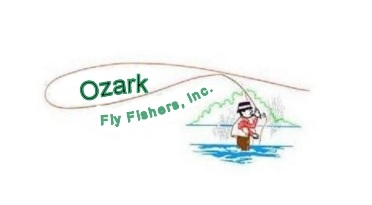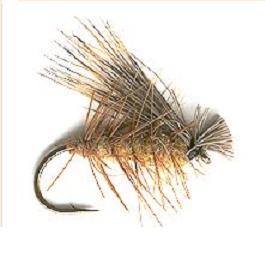Origin
The Elk Hair Caddis was originated by Al Troth. It is an extremely versatile fly that has found its way into every fly fisherman's fly box and takes fish in every trout stream. Click for a video of a conversation with Al Troth.
Materials
- Hook:
- Mustad 94840 or equivalent, size 10-20 (12-18 most common)
- Thread:
- 8/0 Tan or Brown
- Ribbing:
- Fine gold or copper wire (optional)
- Body:
- Dry fly dubbing (tan, cream, brown, olive, gray) or hair's ear fur
- Hackle:
- Brown, ginger or cream
- Wing:
- Elk hair (or deer hair on size 16 or smaller flies)
Tying Instructions
For a video of tying instructins click on the picture of the Elk Hair Caddis.
- Mount the hook and attach thread.
- Tire in wire on top of the hook bringing thread to the rear of the hook.
- Dub the body leaving the front 1/4 of the hook shank bare.Tie in hackle at the front of the dubbed body (shiny side to the rear). Wrap hackle palmer style to the rear; tie down with two turns of wire. Then counter-wrap wire forward through hackle. Tie down the wire with thread and trim. Trim the excess hackle at tail.
- Move thread to front of body. Clean and stack hair, placing wing over body so wing tips are even with the rear of the hook. Pinch wing, take two loose turns of thread over wing, and then pull straight down on the thread.
- Take a tight turn of thread over the wing. While maintaining downward pressure on the thread, push your thumbnail straight down on the wing tie-down spot, making the wing flair a bit over both sides of the body. Take another turn of thread over the wing, then lift up the front of the wing and take two turns of thread in front of the wing. Make these turns tight under the wing stub.
- Hold the wing stub out of the way; whip finish the head, then trim the wing and cement the head and wing tie-down area. Others prefer to trim the wing stub, and then whip finish.
Variations
The two most important body colors for the Elk Hair Caddis are brown and cream with matching hackle, which will give you a light caddis and a dark caddis imitation. Some tiers leave out the hackle and float this fly with just the wing.
Fishing Techniques
Fish the Elk Hair Caddis as you would any other dry fly. It also can be fished in the surface film or deep in the water column. Caddisflies usually do not lay their eggs on the water, but swim to the bottom or under water to deposit the eggs.

